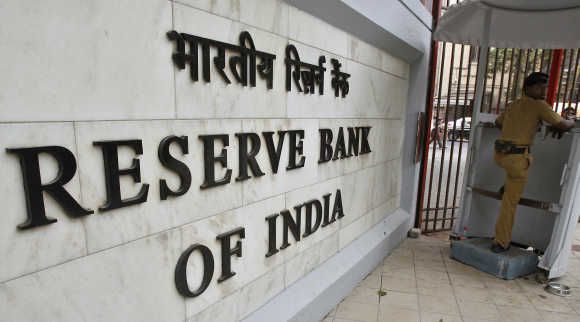
'Robust measured growth of real gross domestic product may not warrant an easing of monetary conditions'
Effective transmission of Reserve Bank of India policy rate to bank rate is contingent on the general liquidity situation in the market not on small savings rate, says the Economic Survey 2015-16.
Policy rates have been reduced substantially in 2015 with no less than four rate cuts cumulating to 125 basis points, including a 50 basis point cut at the October meeting.
But there has been much less accommodation in bank lending rates, which have only fallen by around 50 basis points, the Survey said.
Citing reason for lag, it said, one possible factor could be changes in liquidity conditions as these can reinforce or negate the changes in policy rates.
"The reason is straightforward: if liquidity conditions are tight, commercial banks will be extra cautious about passing on policy rate cuts into lower deposit rates, for fear of losing customers and hence more liquidity," it said.
The Survey also said that many commentators have emphasised that transmission is limited by high administered and small savings rates.
"The argument is that banks worry that if they cut their deposit rates, customers will flee to small savings instruments.
“Recognising this, the government has reduced rates on some small savings schemes to make them more responsive to market conditions.
“But it is also clear from the chart that the small saving schemes don't always constrain pass through," it said.
For example, it said, the June rate cut was followed by a large reduction in deposit rates whereas the much larger October cut was barely passed on at all.
"And the small saving schemes cannot explain why the reductions that have taken place in deposit rates have not led to commensurate reductions in lending rates," it said.
"We, therefore, think that the effective stance of monetary policy could be relaxed and in two ways.
“First, by easing liquidity conditions to make them consistent with the current policy rate.
“Second, by further lowering the policy rate consistent with meeting the inflation target while supporting weakening economic activity and corporate balance sheets," it added.
Robust measured growth of real gross domestic product may not warrant an easing of monetary conditions, it said, adding, but a risk framework combined with a focus on the more reliable nominal aggregates is useful.
"If, in fact, real growth is weaker than suggested by the headline number, easing is appropriate.
“On the other hand, if real GDP growth is indeed robust, the implied disinflation is large, mitigating the inflationary risks of easing," it said.









